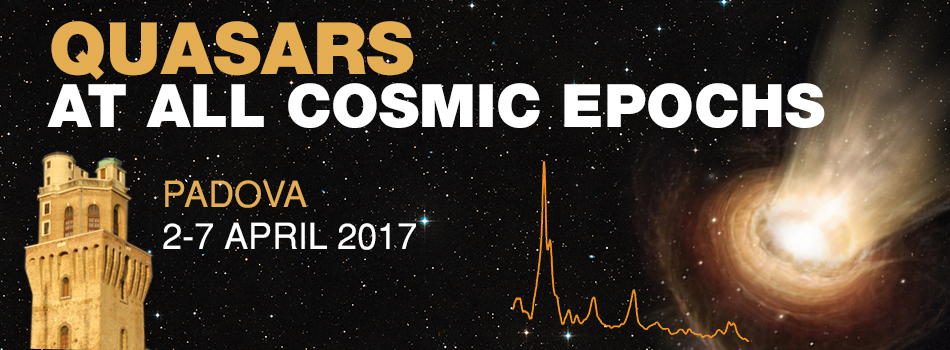Scientific Rationale
The last 50 years have seen a tremendous progress in the research on quasars. From a time when quasars were unforeseen oddities, we have come to a view that considers quasars as active galactic nuclei, with nuclear activity a coming-of-age experienced by most or all galaxies in their evolution. We have passed from a few tens of known quasars of the early 1970s to the almost 200,000 known today. Not surprisingly, accretion processes on the central black holes in the nuclei of galaxies — the key concept in our understanding of quasars and active nuclei in general — have gained an outstanding status in present-day astrophysics. Accretion produces a rich spectrum of phenomena in all bands of the electromagnetic spectrum. The power output of highly-accreting quasars has impressive effects on their host galaxies.
All the improvement in telescope light gathering and in computing power notwithstanding, we still miss a clear connection between observational properties and theory for quasars, as provided, for example, by the H-R diagram for stars. We do not yet have a complete self-consistent view of nuclear activity with predictive power, as we do for main-sequence stellar sources.
At the same time quasars offer many “windows open onto the unknown". On small scales, quasar properties depend on phenomena very close to the black hole event horizon. On large scales, quasars may effect evolution of host galaxies and their circum-galactic environments. Quasars’ potential to map the matter density of the Universe and help reconstruct the Universe’s spacetime geometry is still largely unexploited.
The times are ripe for a critical assessment of our present knowledge of quasars as accreting black holes and of their evolution across the cosmic time. The aim of this meeting is to review and contextualize the main observational scenarios following an empirical approach, to present and discuss the accretion scenario, and then to analyze how a closer connection between theory and observation can be achieved, identifying those aspects of our understanding that are still on a shaky terrain and are therefore uncertain knowledge.
The meeting will cover topics ranging from the nearest environment of the black hole, to the environment of the host galaxies of active nuclei, and to the quasars as markers of the large scale structure and of the geometry of spacetime of the Universe. The spatial domains will encompass the accretion disk, the emission and absorption regions, circum-nuclear starbursts, the host galaxy and its interaction with other galaxies. Systematic attention will be devoted to some key problems that remain outstanding and are clearly not yet solved: the existence of two quasar classes, radio quiet and radio loud, and in general, the systematic contextualization of quasar properties the properties of the central black hole, the dynamics of the accretion flow in the inner parsecs and the origin of the accretion matter, the quasars’ small and large scale environment, the feedback processes produced by the black hole into the host galaxy, quasar evolutionary patterns from seed black holes to the present-day Universe, and the use of quasars as cosmological standard candles.
The timing is appropriate as we are now witnessing a growing body of results from major surveys in the optical, UV X, near and far IR, and radio spectral domains. Radio instrumentation has been upgraded to linear detector — a change that resembles the introduction of CCDs for optical astronomy — making possible the study at radio frequency of radio quiet quasars. Herschel and ALMA are especially suited to study the circum-nuclear star formation processes. The new generation of 3D magnetohydrodynamical models offers the prospective of a full physical modeling of the whole quasar emitting regions. At the same time, on the forefront of optical astronomy, applications of adaptive optics to long-slit spectroscopy is yielding unprecedented results on high redshift quasars. Other measurement techniques like 2D and photometric reverberation mapping are also yielding an unprecedented amount of data thanks to dedicated experiments and instruments. Thanks to the instrumental advances, ever growing computing power as well as the coming of age of statistical and analysis techniques, the smallest spatial scales are being probed at unprecedented resolution for wide samples of quasars. On large scales, feedback processes are going out of the realm of single-object studies and are entering into the domain of issues involving efficiency and prevalence over a broad range of cosmic epochs.
The meeting will be held in downtown Padova, whose University and Observatory host one of the largest communities of professional astronomers in Europe, with a large school and a long tradition in teaching of physics and astronomy. Several groups at the Department of
Physics and Astronomy and of the Observatory are at the forefront of research on many aspects of the key topic of the meeting. The meeting will be part of the events meant to celebrate the 250th anniversary of the foundation of the Padova Observatory.

